Influence of frost weathering on the recession of surfaces of technogenic landforms in Yakutia
Andrey E.Melnikov,Nikolay N.Grib
1.Melnikov Permafrost Institute of the Siberian Branch of the Russian Academy of Sciences,Yakutsk 677010,Russia
2.Technical Institute(branch)of M.K.Ammosov North-eastern Federal University,Neryungri 678960,Russia
ABSTRACT The article assesses the influence of permafrost weathering on the rate of destruction of technogenic land forms,as exhibited on as illustrated by the railway embankment of the Amur-Yakut mainline in the Sakha Republic (Yakutia). Studies were carried out on a railway section more than 375 km long.The subsidence rate of the embankment slopes and structural excavations was determined using laboratory methods that simulate various mechanisms of temperature (with a transition through 0 °C) impact on rocks. For the first time, a quantitative assessment of the influence of cryogenic weathering on the stability of the railway in the region belonging to the northern building-climatic zone is given.For the territory under consideration,embankment rocks were experimentally determined to undergo more than 100 freezing and thawing cycles during a year. Under the existing climatic conditions, cryogenic weathering actively affects the embankment of the railway to a depth of 30 cm. Most of the embankment deformations detected during field observations are due to defects in the integrity of this particular layer. The size of the disintegrating layer of particular types of rock comprising the railway embankment has been established as reaching 10 cm per year. In 5 years following the formation of embankments comprising the upper structure of the railroad tracks,the physical and mechanical properties of rocks,which initially had a tensile strength for uniaxial compression in the range of 40-70 MPa, were reduced by more than 50%.According to the authors,the establishment of regional cryohypergenesis features is universal in nature and can be applied to solving a wide range of tasks related to the assessment and prediction of the degree of cryogenic transformation of rocks having different structural properties.
Keywords:cryogenic weathering;embankment;railway;subsidence rate;Republic of Sakha;Yakutia
1 Introduction
The forecasting of landslide processes and landfalls, as well as the assessment of the stability of railway slopes under conditions of a sharply continental climate cannot be sufficiently substantiated without a detailed study of cryogenic weathering, which is responsible for the dispersion of rocks and subsequent deformations of the surfaces. In the present work,cryogenic weathering refers to the destruction of rocks as a result of alternating temperatures (with transition through 0 °С) and periodic freezing-thawing of poreand interstitial water.
To clarify the character of the rock disintegration depending on geological, hydrological, climatic, and other conditions, as well as to justify management actions on cryogenic weathering of rocks in areas of designed and built structures, information on the weathering rate is required. Typically, studies of the weathering rate are carried out either on artificial exposures with a known date of uncovering or by special observations in conditions close to those of construction and operation of the structure. The rate of surface destruction under natural conditions is often determined by measuring the volumes of scree appearing at the foot of the cliffs over a fixed period of time.In the general case, the alteration range in the rate of rock and semi-rock weathering comprises 0.001-2,500 mm/a(Wiman, 1963; Portnova, 1968; Fakuda, 1974; Laperdin, 1985; Recommendations, 1989). Such a wide range of alternation rates in the destruction of rocks necessitates a special study of this issue. At some point, both stationary long-term observations and the development of an express technique for obtaining characteristics of the process of cryogenic weathering in the early stages of design are required. It should be noted here, that cryogenic weathering is not the only type of physical weathering of rocks.A certain contribution to their disintegration is made by weathering due to temperature fluctuations and weathering due to varying moisture content. The proportion of cryogenic weathering in the destruction of rocks compared to other types of erosion, is very significant, generally in the region of 80% or more (Voronkov and Ushakova,1996; Zabelin and Pavlov, 2000; Shesternev, 2001;Kurilko,2005).
In the study, the influence of cryogenic weathering on the destruction rate of technogenic land forms,as exhibited on the railway embankment of the Amur-Yakut mainline in the Sakha Republic (Yakutia), was assessed. The Amur-Yakut trunk line is a railway in eastern Russia connecting the Trans-Siberian Railway and the Baikal-Amur trunk line with Yakutia (Figure 1). It begins at the Skovorodino station, with the final station located 30 km from the city of Yakutsk, in the village of Nizhny Bestyakh. The Amur-Yakut mainline is the largest railway built in Russia over the past 40 years.

Figure 1 Tommot-Kerdem railway section on a schematic map of the territory of Russia.1:Amur-Yakut mainline;2:section of the Tommot-Kerdem railway on the Amur-Yakut mainline;3:populated areas;and 4:water bodies
According to the analysis of field data carried out by the authors in 2008-2017, the climatic conditions along the railway line are highly conducive to the intensive process of cryogenic weathering (Vyrkin, 1983;Konstantinova and Pokryshka, 2005; Vasil'ev et al.,2007; Grib et al., 2009; Shesternev and Litovko,2011). The impact of the climate on construction is manifested in the disintegration of the coarse-grained soil used as a building material of the upper structure of the embankment and other elements of the railway.The studies were carried out on the 375-km-long section of the Tommot-Kerdem Railway (Figure 1). The rate of recession of the embankment slopes and excavations of the structure was determined by laboratory methods that simulate various mechanisms of temperature(with a transition through 0°C)impact on rocks.The obtained data were compared to the results of field instrumental geodetic observations of the inclined surfaces of the construction.
2 Materials and methods
The main factors determining the rate of cryogenic weathering of rocks comprise their degree of water saturation and the number of freeze - thaw cycles(FTC) they undergo (Fahey and Gowan, 1979; Sannikov, 1980; Voronkov and Ushakova, 1996; Yadrishchensky, 1997; Zabelin, 2000; Kurilko, 2005; Roman and Zhang, 2010). Thus, the methodical approach to determining the rates of destruction of the slopes under the influence of weathering included the work in two main interrelated stages: (1) determining the number of FTCs on the surface and in the body of the railway embankment; and (2) laboratory studies of rock samples exposed to repeated freezing and thawing, with periodic monitoring of changes in their properties.
To determine the number of FTCs, temperature loggers were installed on the main elements of the railway track. Moreover, the temperature sensors were located in such a way as to obtain data on the number of temperature transitions through 0 °C, both on slopes covered with snow during the year and in places protected from it,i.e.,under bridge passages and weather shelters(Figure 2).
To assess the change in the intensity of rock cryogenic weathering with depth, a thermistor chain was mounted in the body of the embankment.
The laboratory-testing stage consisted of the following types of work: rock sampling along the railway line, preparation of selected rocks for testing,conducting the laboratory experiment, and processing the results of experimental studies.
The following types of rocks were selected: limestone with dolomite impurity, dolomite, and dolomite having a finely dispersed admixture of iron oxides and fine sandstone. At the sampling site, the solid fragments of natural stone with a diameter of 20-50 cm were sampled. The size of the fraction in this case was selected on the basis of an analysis of the material composition of the transverse profiles of the railway line under consideration. Debris of this size serves as reinforcing elements for embankment slopes,drainage ditches, and water dividers at virtually all points along the railway line(Figure 3).
The samples were packed for transport to the testing laboratory.Each type of rock was sorted into a separate laboratory group. Then rock samples were prepared for the formation of laboratory series. To obtain complete information about the test material, petrographic and mineralogical analysis was performed for each type of selected rocks. Prior to testing, the structural and texture features, bulk density, and propagation velocity of elastic longitudinal waves in three mutually perpendicular directions of each sample were determined on the basis of macroscopic studies(Table 1).
Tests of rocks forming the Tommot-Kerdem Railway embankment were carried out under various conditions: I: rocks in natural conditions without water flow; II: rocks in a water-saturated state; and III: conditions occurring at the place of contact of the rocks with the snowflakes and frost in the spring-summer period. Such a differentiation in the conditions of a laboratory experiment is contingent upon the heterogeneity of the orographic, permafrost, and hydrological characteristics in the zone of linear construction.For example, during field studies, most of the railway's artificial structures were noted to operate under difficult hydrological conditions of the backwater of rivers. The almost ubiquitous spread of easily eroded rocks leads to a strong water-erosion process, which is explained not only by the plain character of the area but also by the presence of a large number of disconnected lake-alas depressions accumulating surface runoff. The long cold season often contributes to the complete freezing of lakes and rivers along the zone of the linear structure and the formation of frost(Mikhailov, 1968; Zheleznyak, 2005; Vasil'ev et al.,2007;Melnikov,2015).
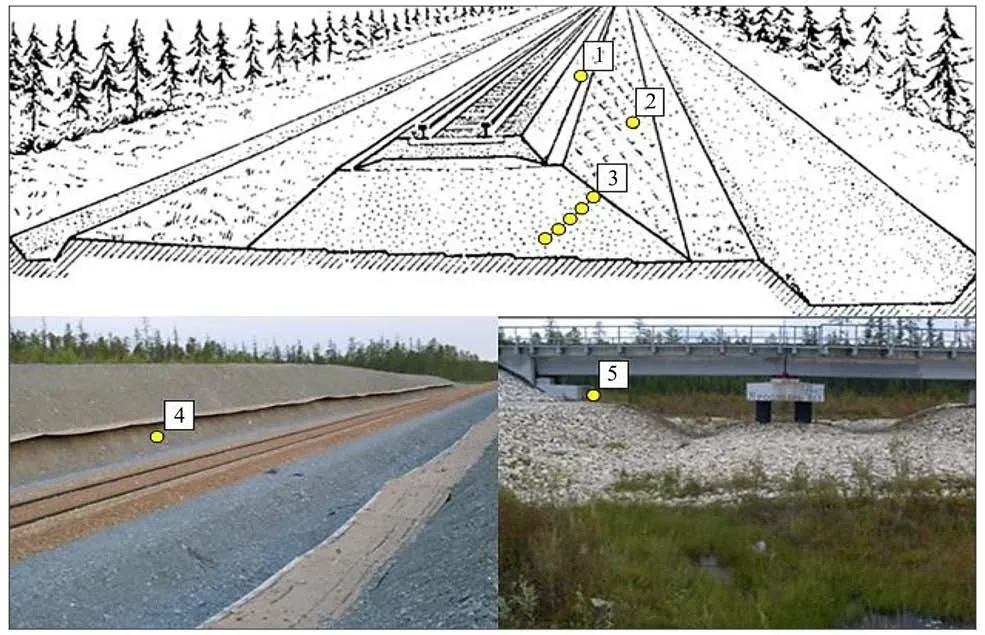
Figure 2 Location of temperature sensors on the Tommot-Kerdem railway embankment:1:laying platform for the upper structure of the track;2:embankment slopes;3:installation of thermistor chain in the embankment body;4,5:elements of the embankment,protected by various structures from active weather

Figure 3 Distribution scheme of rocky soil on the embankment.1:levelling layer 0.5-m thick of rocky soil of maximum fraction 20 cm;2:rocky soil with filler up to 10%;3:rocky soil with a diameter of 20-50 cm without filler;and 4:reinforcement by rocky soil layered up to 0.5 m

Table 1 Mineral composition of carbonate rocks composing the embankment of the railway
Rock samples from all laboratory series were placed in metal cassettes for the freeze-thaw cycle.The freezing conditions for all samples were the same,comprising a temperature of-20°С in the freezer with a temperature-control accuracy of no more than 2 °С. The exposure time of temperature stabilisation of the samples in the freezer was determined experimentally before the start of the experiments by installing thermistors. Thus, the time of freezing the samples of all groups comprised not less than 15 hours.
Samples that simulate the I mechanism of destruction of the embankment rocks were subjected to the FTC under "dry" conditions, i.e. frozen at t = -20 °C for 15 hours,then thawed at t=+18...+20°C,for no less than 10 hours.For conditions II,freezing of metal cassettes with samples was performed after they were completely filled with water to a level above the upper face of the sample by at least 2.0 cm. Thawing was carried out in a water bath for 10 hours at an ambient temperature of +18 ... +20 °C. To simulate the mechanism of rock destruction III, the samples were frozen in a dry state with thawing during the immersion in water.
Processing the results of the laboratory experiment consisted of calculating the changes in the indices of the simplest properties of rocks after a certain number of FTC, i.e., density ρ; mass loss ΔM; and, at the end of the experiments, the thickness h of the disintegrating rock layer related to 1 FTC; strength σ;and rate of rock cryogenic weathering υMBP.
3 Results and discussion
Taking into account the snow cover established during the winter period as having an average thickness of 40 cm on the surface of the embankment of the linear construction, the number of transitions through 0 °С per year was experimentally determined to exceed 115 (Table 2). At surfaces not covered by snow during the year, the number of such transitions increases by 15%-20%. It should be noted here that according to the zoning scheme of the territory of Russia and other republics by the number of FTCs per one year on the soil surface, most of the Tommot-Kerdem Railway belongs to the region with the number of FTCs within only 50 For a railway line having a general orientation of north-northeast, the maximum difference in the number of FTCs on opposite slopes of the embankment comprises seven cycles. The following months are characterised by the largest number of FTCs: April-May,52%;and September-October,44%.At the same time,the effect of spring and autumn FTCs on rocks is different. Weathering in spring appears to be more intense due to additional moisture of the rock during thaws. Cryogenic weathering actively proceeds in the upper layer of an embankment, with a thickness of up to 30 cm, consisting of coarse rock material (Figure 4). Because the influence of cryogenic weathering on the structure is manifested in the disintegration of coarse soil in terms of its components, caving, crumbling,and slipping of the soil are associated with violation of the integrity of this particular layer. The most intensive disintegration of rocks is characteristic of those sections of the track that pass within the limits of the valleys of rivers and streams. Here, the destruction of carbonate rocks proceeds by splitting and desquamation in relatively dry areas, passing through watershed surfaces (Figure 5). During laboratory tests,rock samples were subjected to 500-fold cyclic freezing and thawing, which corresponds to the 5-year life of the Tommot-Kerdem Railway (Table 2).According to the data obtained, in 5 years the size of the disintegrating layer of rocks forming the embankment can reach several tens of centimetres(Table 3,Figure 6).It is interesting to note, that in the opinion of Japanese researchers (Fakuda, 1974; Fahey and Gowan, 1979),rocks having a mass reduced byto 10% at N = 200 FTC are more frost-resistant and suitable for rock-embankment formation.For rocks composing the Tommot-Kerdem Railway embankment, weight loss of samples after 200 FTCs ranges from 6% to 35% (Table 4,Figure 7). Table 2 Average number of transitions through 0°С of air temperature on the land surface along the Tommot-Kerdem Railway line Figure 4 Change in the number of temperature transitions through 0°C in the embankment,depending on depth,h;depth from the surface of the embankment,m;and N,number of temperature transitions Figure 5 Degree of rock destruction,depending on the hydrological conditions along the railway,July 2012:(a)weathering of dolomite without water flow(upper part of the slope);(b)destruction of the same dolomite in a highly humid environment(bottom of the river valley) Table 3 Rate of rock disintegration during cryogenic weathering Figure 6 Disintegration of dolomite with a finely dispersed impurity of Fe oxides,forming the recess,under the influence of cryogenic weathering:2008(a),2014(b) Table 4 Weight loss of FTC-tested samples,ΔМ(%) Figure 7 Disintegration of rock samples under the influence of cryogenic weathering after 500 FTC,depending on the conditions of freezing and thawing.Rows.1:dolomite;2:limestone with dolomite impurity;3:dolomite with finely dispersed impurity of iron oxides;4:sandstone;Columns:a:before the experiment;b:under condition I;c:under condition II;d:under nival condition III It was experimentally shown that the magnitude of changes in the strength of rock samples differs depending on the test conditions.So,for example,in dolomite having a finely dispersed admixture of iron oxides, the strength value σ decreased by 79% in test condition II upon reaching 400 FTS(Table 5).At conditions exceeding 400 FTS, the rock had almost completely lost its bearing capacity, having collapsed to the state of grus soil. Under test condition III, the disintegration of this rock was even more intense: The decrease in σ values after 200 FTC was more than 70%. Table 5 Change in the tensile strength(σ)of rock under uniaxial compression(MPa)after a certain number of FTC under various freeze-thaw conditions Thus, the physical and mechanical properties of the rocks, which initially have a tensile strength for uniaxial compression in the range of 40-70 MPa, are reduced by more than 50%with more than 500 FTC. In summarising the above findings,it is worth noting that in the experimental study of cryogenic weathering, the most common methods are those that include a determination of the frost resistance of rocks during their cyclic freezing and thawing (GOST 10260-82, 1982; GOST 8268-82, 1982; Lomtadze,1984; GOST 8209-87, 1987; GOST 25100-95, 1995;GOST 10060.2-95, 1996). A quantitative assessment of frost resistance is given by changing the mass of the rock sample or by decreasing its strength. As a rule, the freezing and thawing modes are governed by regulatory documents. Typically, the method involves the assessment of frost resistance after 25-fold freezing and thawing of rocks. However, the average number of freeze-thaw cycles on the land surface during one year for the permafrost areas in most cases exceeds 25 cycles. Consequently, technical standards and rules for testing soils used for the construction of various structures do not fully consider the regional characteristics of individual territories, including those of the Republic of Sakha (Yakutia). According to the authors, the use of rocks as a building material for various embankment structures should be classified according to the frost-resistance index,depending on the hydrological, engineering - geological, and geocryological conditions of the construction site where the soil will be used. To date, there is still a significant lag in the study of the theory of weathering processes, as well as in the development of methods for their engineeringgeological assessment. Unlike weathering processes in temperate climates, which have been studied for several decades, research methods and approaches for permafrost areas are still under development. In addition, in studies of cryogenic weathering of soils, the latter are usually not considered from the point of view of building materials, which have their own operating requirements and values informing regulatory and technical documentation. Despite over a century of experience in the construction and operation of roads in permafrost, the number of studies focusing on the issue of sustainability of the railway bed in the cryolithozone keeps on increasing. This tendency can be explained as follows:Because the specific operating conditions of a linear structure on permafrost soils cause the deformation characteristics to differ significantly depending on their source, the information obtained about deformations is often contradictory, both in terms of indicating of the reasons for their formation and in terms of their location. Many factors affecting the stability of railway tracks on specific sections of the route, starting from the time of construction, have yet to be fully analysed and systematised. In this regard, it is noteworthy that the disruption of the normal operation of the railway bed in harsh climatic conditions under the influence of weathering is only minimally considered. As applied to Russia, the situation is complicated by the fact that today there are no Russian or departmental regulatory and technical documents that allow the effect of cryogenic weathering on the stability of railways to be evaluated and predicted. However, studies of the weathering of rocks used as building materials are very important in surveys in order to justify projects involving diverse engineering structures.As an example, the results of the scientific works of G.M. Shakhunyants (Shakhunyants, 1974; Shakhunyants, 1987)can be considered.In his studies,the author considers issues of ensuring the stability of high embankments erected from light-weathering rock on the section of the Krasnodar-Tuapse Railway. It is shown that the destruction of rocks of the upper layer of the embankment under the influence of weathering caused not only the formation of deformations but also the precipitation from the structural elements of the roadbed more individual weathering-resistant rock fragments.The paper presents data on the annual cleaning of the products of destruction from the sides of the excavations and embankments, involving up to 125,000 m3of material. Thus, it makes sense to consider cryogenic weathering as one of the important factors influencing manmade landforms in general and the stability of railways in particular. Some evidence of this importance is seen in the results of the work outlined in this article,which can be reduced to the following: 1. One of the main causes of deformation at the initial stage of operation of the Tommot-Kerdem Railway section of the Amur-Yakutsk railroad line is a decrease in the frost resistance of coarse sedimentarymetamorphosed carbonate soils used as a building material for the embankment top structure. 2. The conditions of cryogenic weathering and the number of freeze-thaw cycles in embankments formed of coarse-clastic sedimentary-metamorphosed grounds determine regional patterns of change in their properties. 3.In the simplest case,the method presented in this paper allows approximate information on the rate of cryogenic weathering to be obtained for rocks of differing composition and condition, as well as a calculation of the thickness of the disintegrating rock layer for the forecast period of time(year,decade,whatever). According to the authors,the establishment of features of regional cryohypergenesis is universal in nature and can be applied to the solution of a wide range of tasks related to the assessment and prediction of the degree of cryogenic transformation of rocks having different structural characteristics.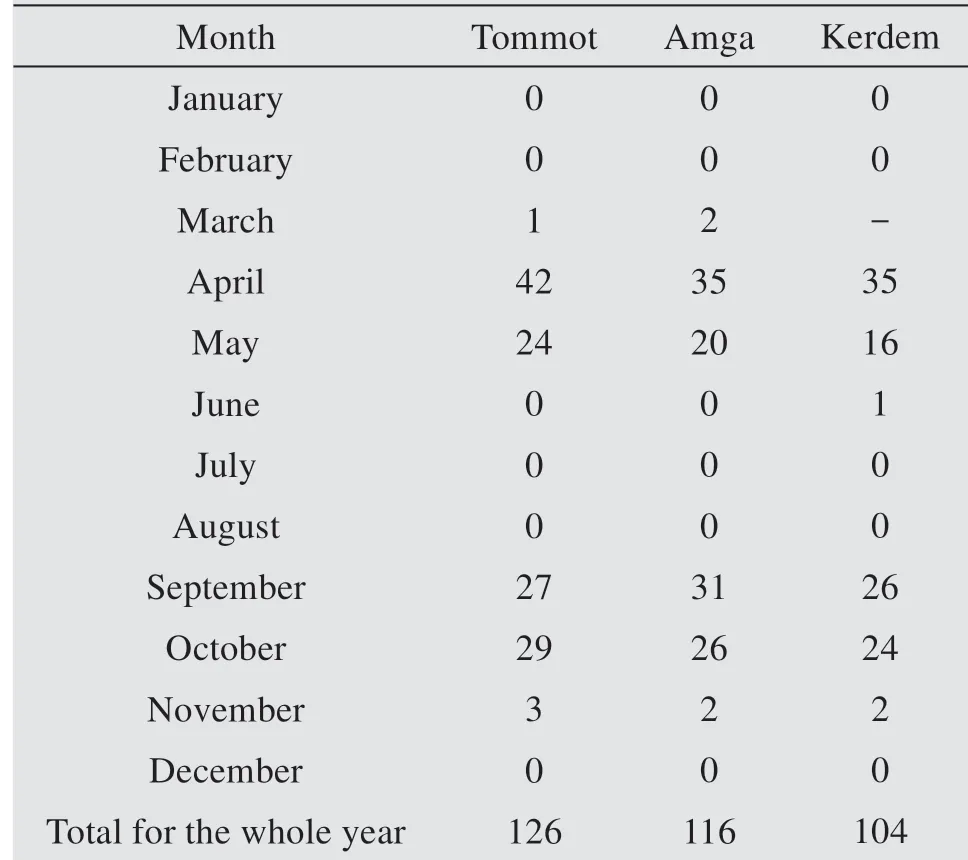

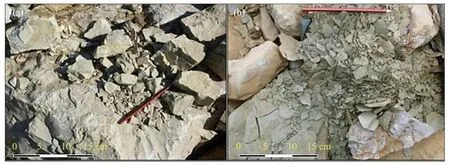
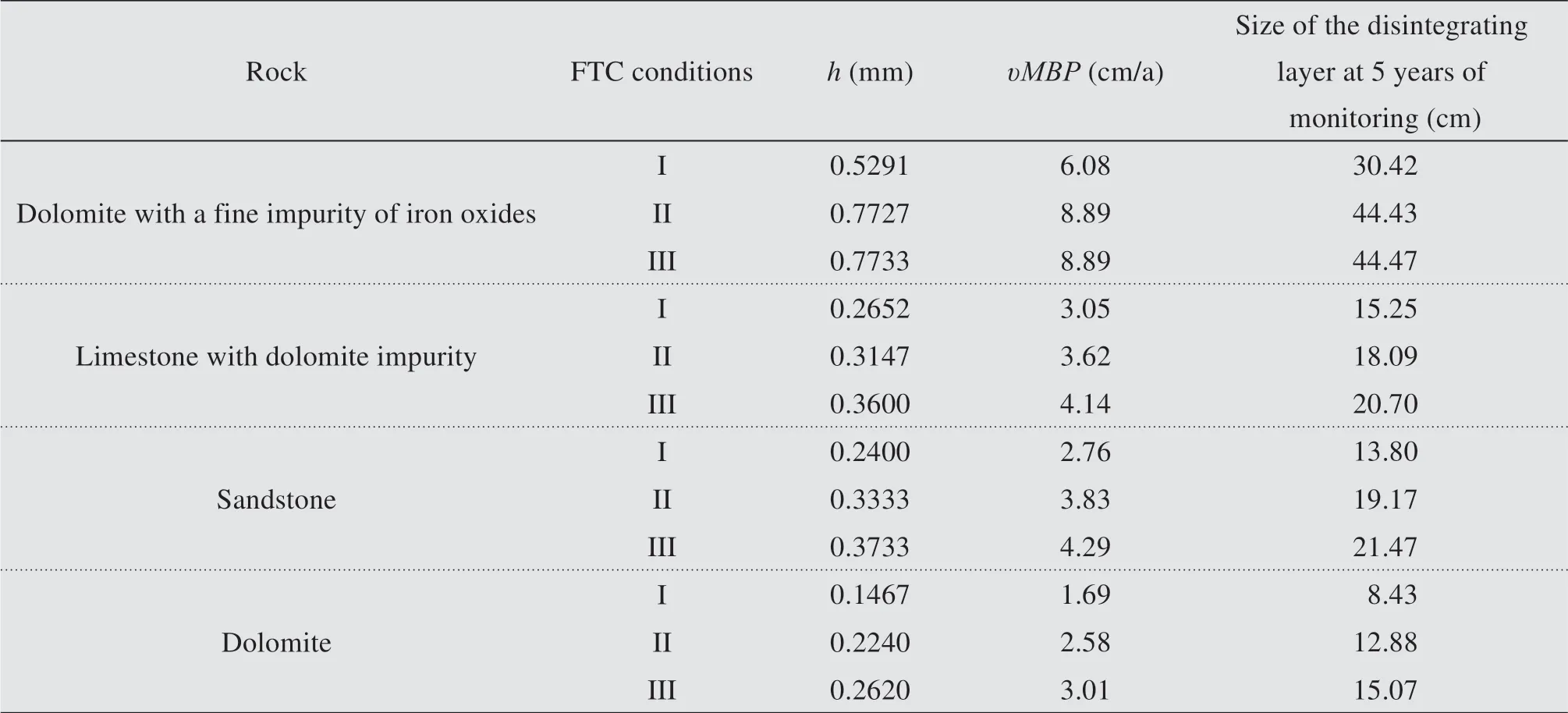



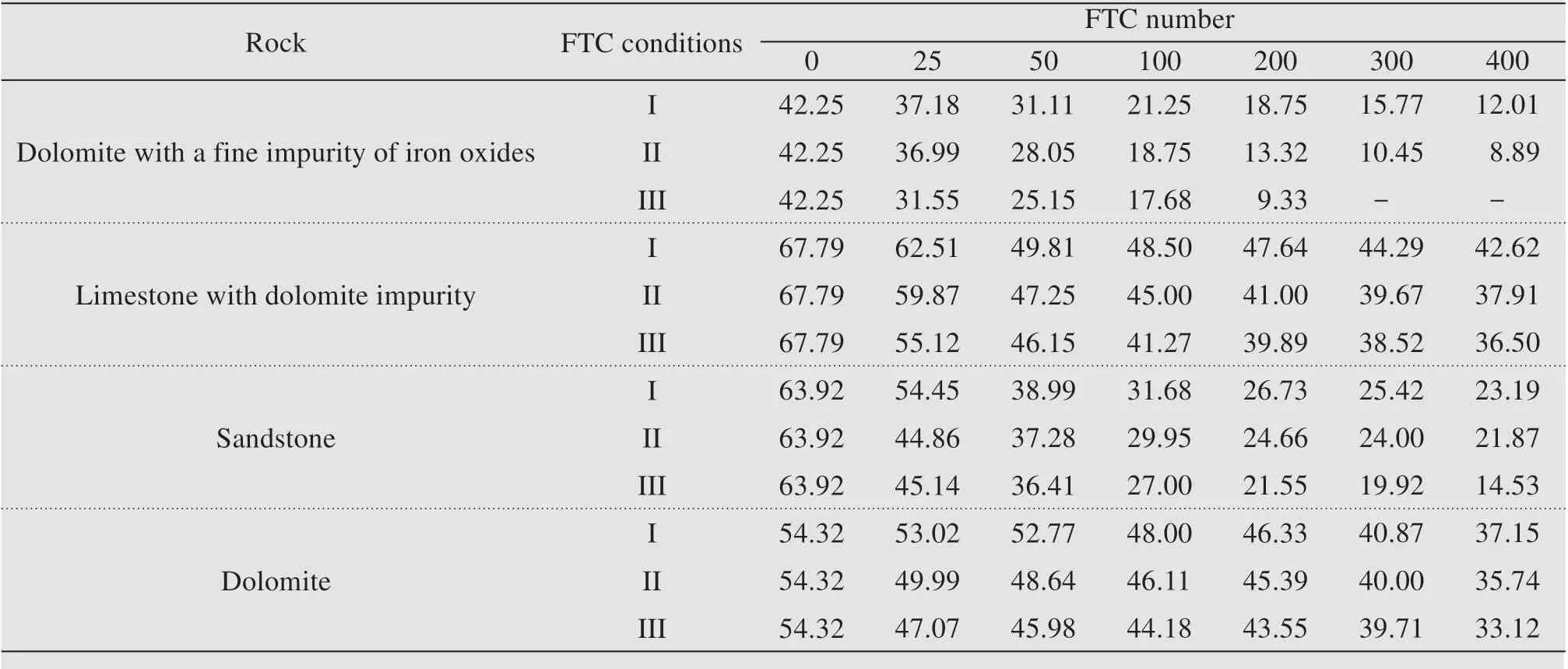
4 Conclusion
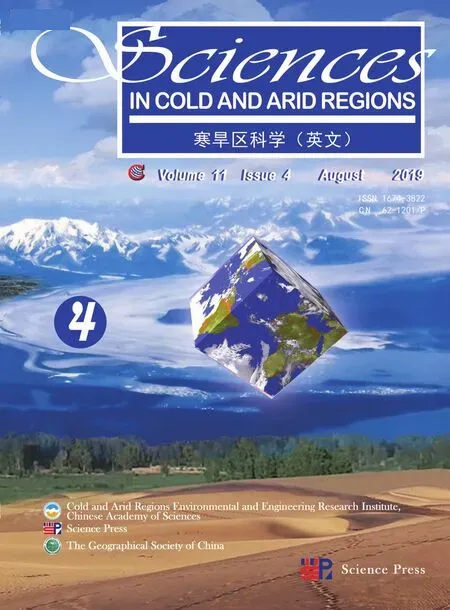 Sciences in Cold and Arid Regions2019年4期
Sciences in Cold and Arid Regions2019年4期
- Sciences in Cold and Arid Regions的其它文章
- Effects of gibberellic acid on tiller-bulb number and growth performance of Lilium davidii var.unicolor
- Holocene lake carbon sequestration,hydrological status and vegetation change,China
- Comparative study of surface energy and land-surface parameters in different climate zones in Northwest China
- A paleo-hydrological simulation experiment and its verification in an inland basin
- Editors-in-Chief Guodong Cheng and Ximing Cai
- Guidelines to Authors
